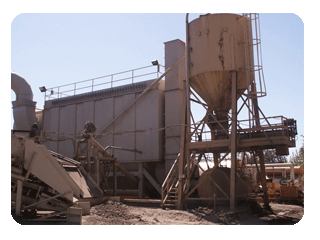
Industrial Assessment Centers provide energy, waste, and productivity assessments at no cost to small and medium-sized manufacturers. Centers are funded through the U.S. Department of Energy, Industrial Technologies' Industrial Assessment Center (IAC) program. Assessments help manufactures maximize energy efficiency, reduce waste, and improve productivity. Nationally, recommended actions from an assessment result in average annual cost savings of about $160,000. Assessments are performed by teams of engineering faculty and students from 32 participating universities across the country.
On the plant visit day, an OSU team of engineering faculty and students will spend the day touring your facility and collecting data on the operation of your equipment. Our visit will last about 8 to 10 hours, which will include the following parts.
We would like to spend about an hour touring your plant with one of your employees who has knowledge about all aspects of your process. To help us serve you better, the person leading the tour should be able to point out areas on which you would like us to concentrate.
After the tour we meet with selected staff from your plant to list the opportunities we saw. We also want to include projects that you already know about and need assistance in analyzing. For example, we can research potential solutions and equipment or calculate benefits and costs to help you determine if projects are economically feasible.
We will spend the next three to four hours gathering the data we will need to analyze the recommendations that we are considering. This includes measuring temperatures, pressures, power, and flow rates, as well as collecting operating schedules, quality statistics, and downtime. To aid us in gathering the necessary data it will be helpful for us to spend a little time with the following people:
Before we leave we would like to meet with selected members of your staff to present the opportunities we think will offer significant savings with reasonable payback and that we plan to pursue further. Your comments will be extremely valuable to us at this time to ensure that our list includes opportunities you are interested in, your priorities, and to give us feedback on assumptions.
In the weeks following our visit we may call or email you to clarify some points about your facility. We try to get as much information as possible during our visit but additional details may be required for a complete analysis.
Within two months you will receive a report containing specific recommendations on ways to improve productivity and to reduce energy costs and minimize waste, including estimates of implementation costs and payback periods. View sample report and recommendations.
We will call you in 6 to 12 months to find out which recommendations you were able to implement. We may also ask you if a representative of the U.S. Department of Energy, which funds the program, can visit or call you. This follow-up interview will take no more than half an hour. They interview approximately half of the manufacturers we serve to determine how useful our service has been.

Small and medium-sized manufacturers with Standard Industrial Classification Codes 20 through 39, who meet the following four requirements are eligible to be assessed by any Industrial Assessment Center across the nation. Larger facilities may be eligible for multiple day assessments. Manufacturers who do not meet the four requirements may be assessed by special request.